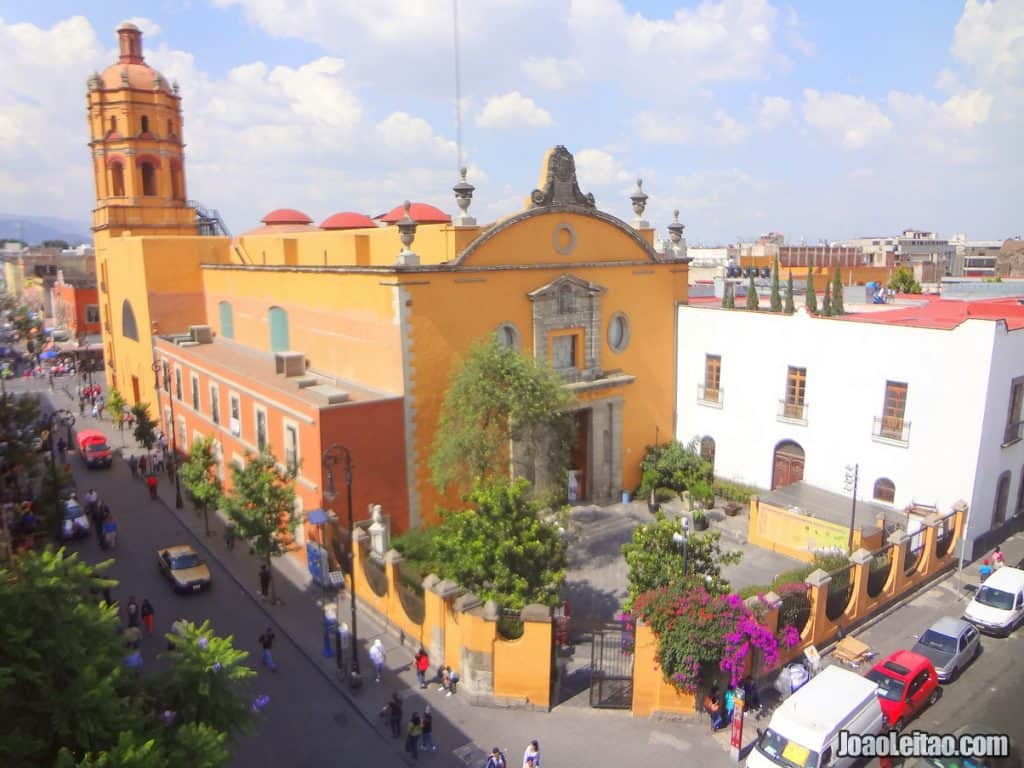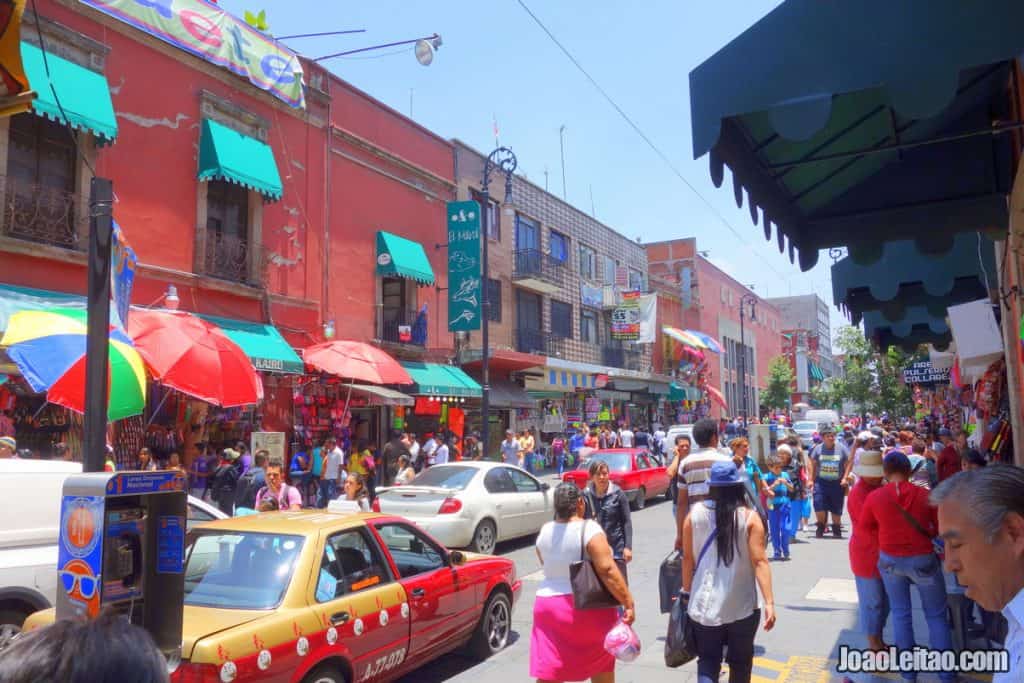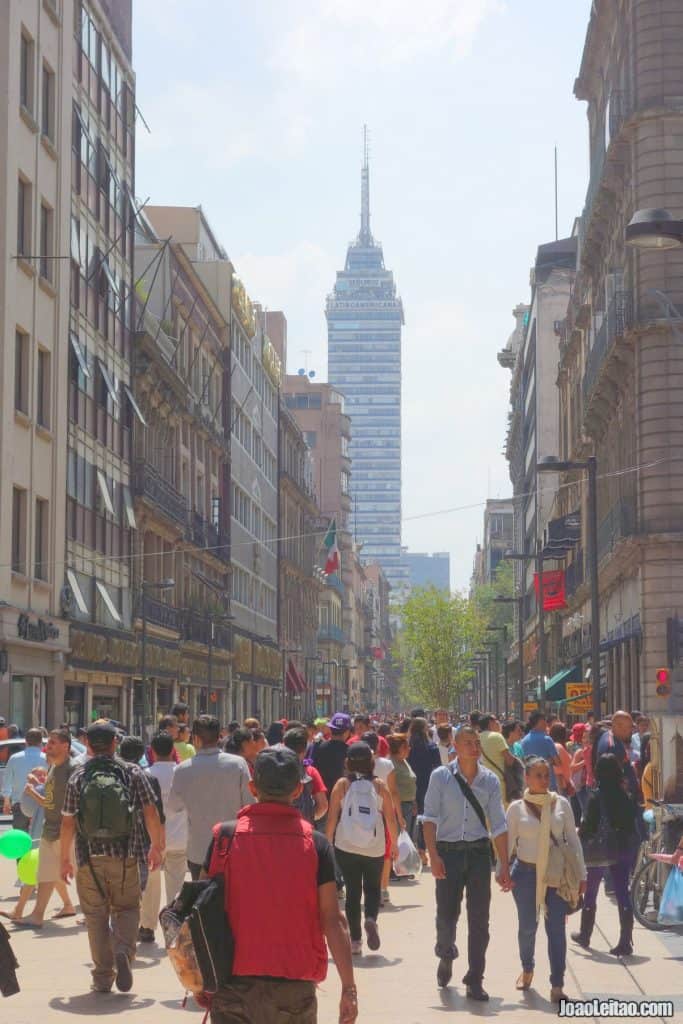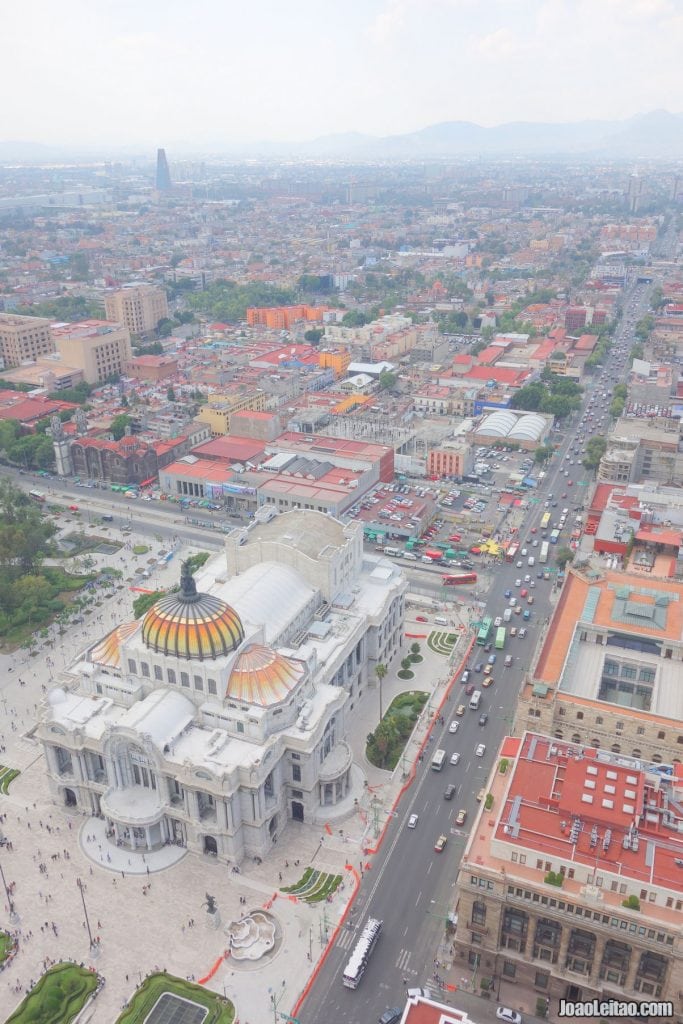Table of Contents
Visit Mexico City
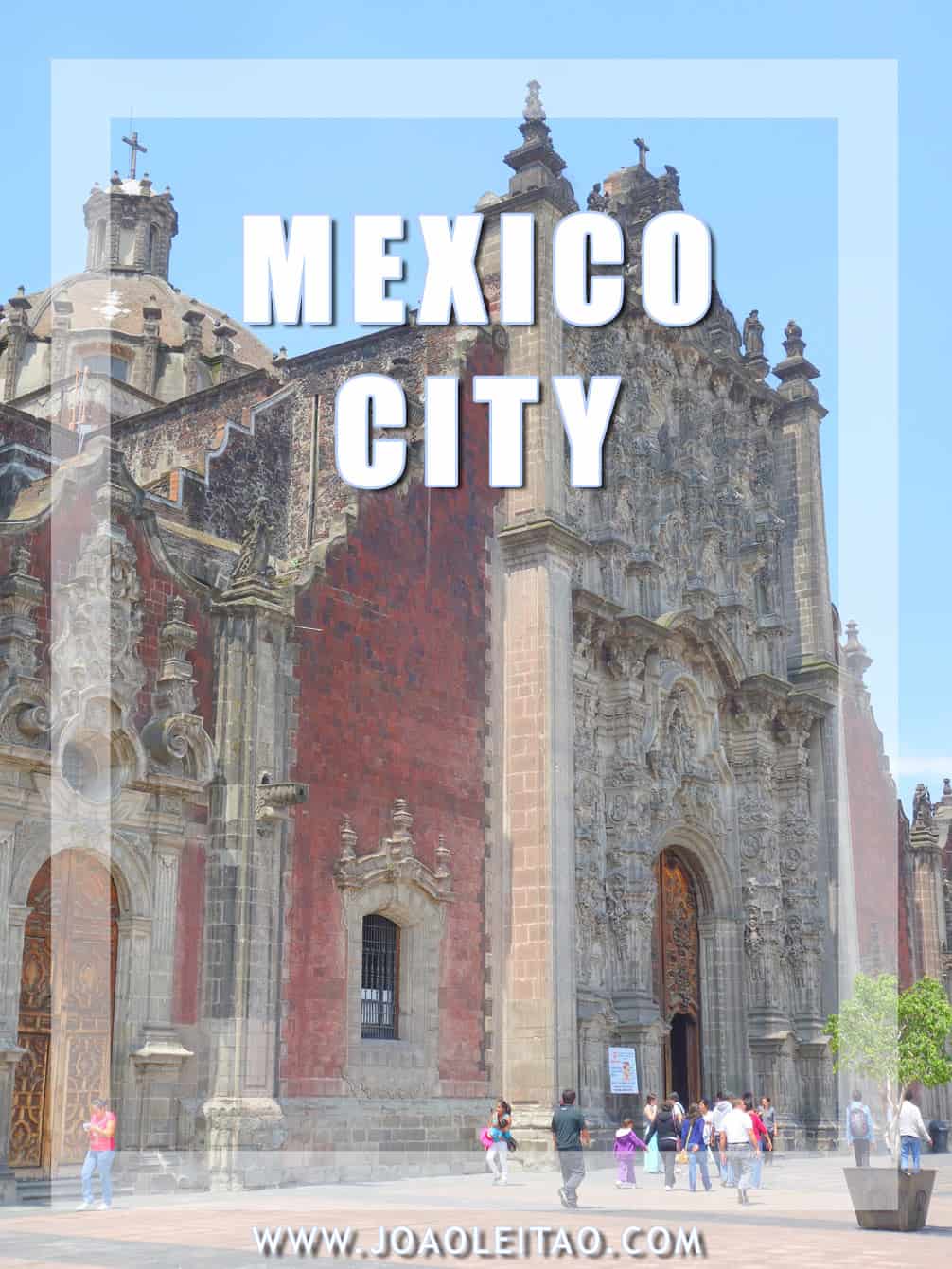
With almost 10 million people in the city and a total of 26 million in its urban area, Mexico City is one of the largest cities in the world. It’s in a valley, surrounded by mountains and volcanoes, on the dry bed of the ancient Lake Texcoco.
To visit Mexico City it’s quite easy. Its historic center is listed as a UNESCO World Heritage Site and has deep historical roots: the Aztec emperors ruled Ancient Mexico from the same place where the National Palace is today, at the Constitution Square.
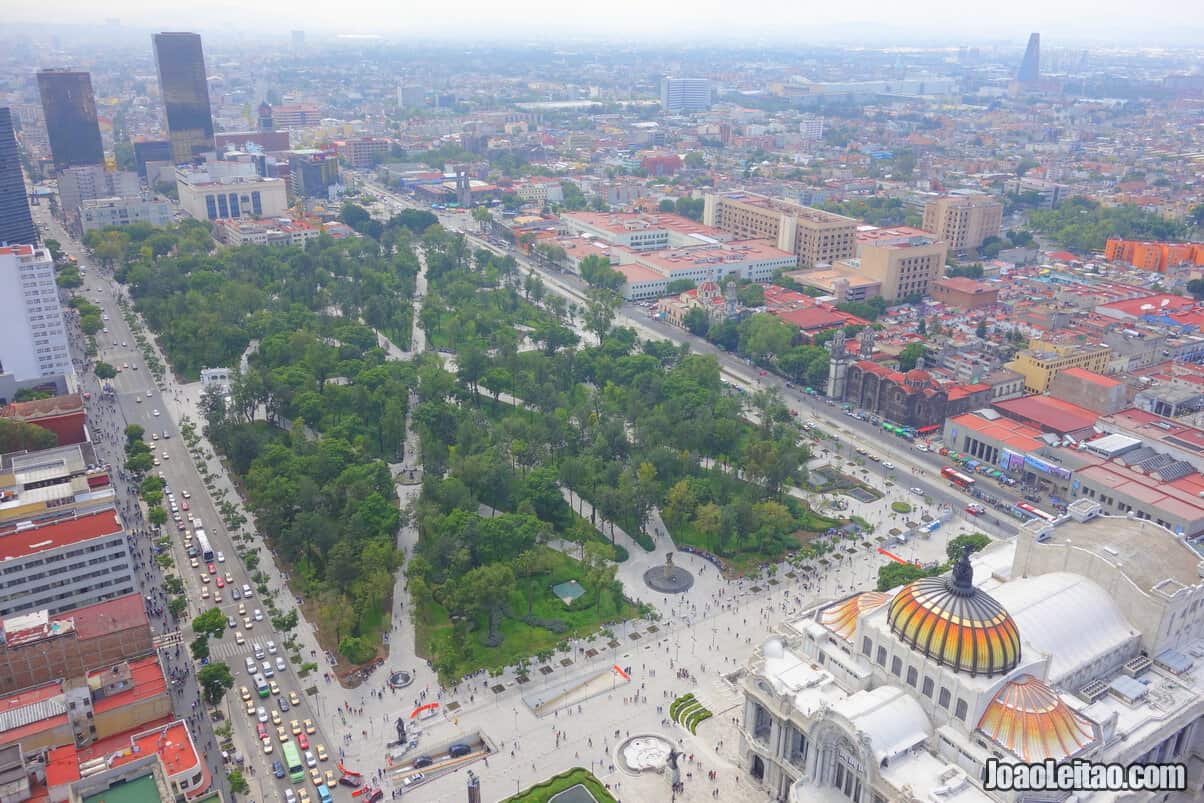
The Spanish used the city center as their headquarters and so did the government of independent Mexico after them. The most important events of the country’s history happened here, in the historical center. Of course, there’s plenty more to see in a city this big beyond the center. You can visit the neighborhoods of San Ángel or Santa Maria Ríbero, or even take a day trip to one of the most important pre-Colombian cities in Teotihuacan, 40 km from Mexico City.
The Mexican capital is also a great place for cultural tourists with wonderful museums, several places to enjoy the local cuisine, and a permanent celebration atmosphere that lasts all night long.
Major Points of Interest and Monuments in Mexico City
- Historic Center of Mexico City
- Castle of Chapultepec
- Metropolitan Cathedral of Mexico City
- Constitution Square
- Chapultepec Park
- Pyramid of the Sun
- National Palace
- The Angel of Independence
- Bell Palace
- House Museum of Leon Trotsky
- Chapultepec Museum of Natural History
- Monument to the Revolution
- Square of Three Cultures
- House of the Tiles
- Modern Art Museum
- Garibaldi Square
- National Museum of Art of Mexico
- Diego Rivera Mural Museum
- Templo Mayor
- House of Frida Kahlo
- National Museum of Anthropology
- Basilica of Our Lady of Guadalupe
Quick tips for Mexico City
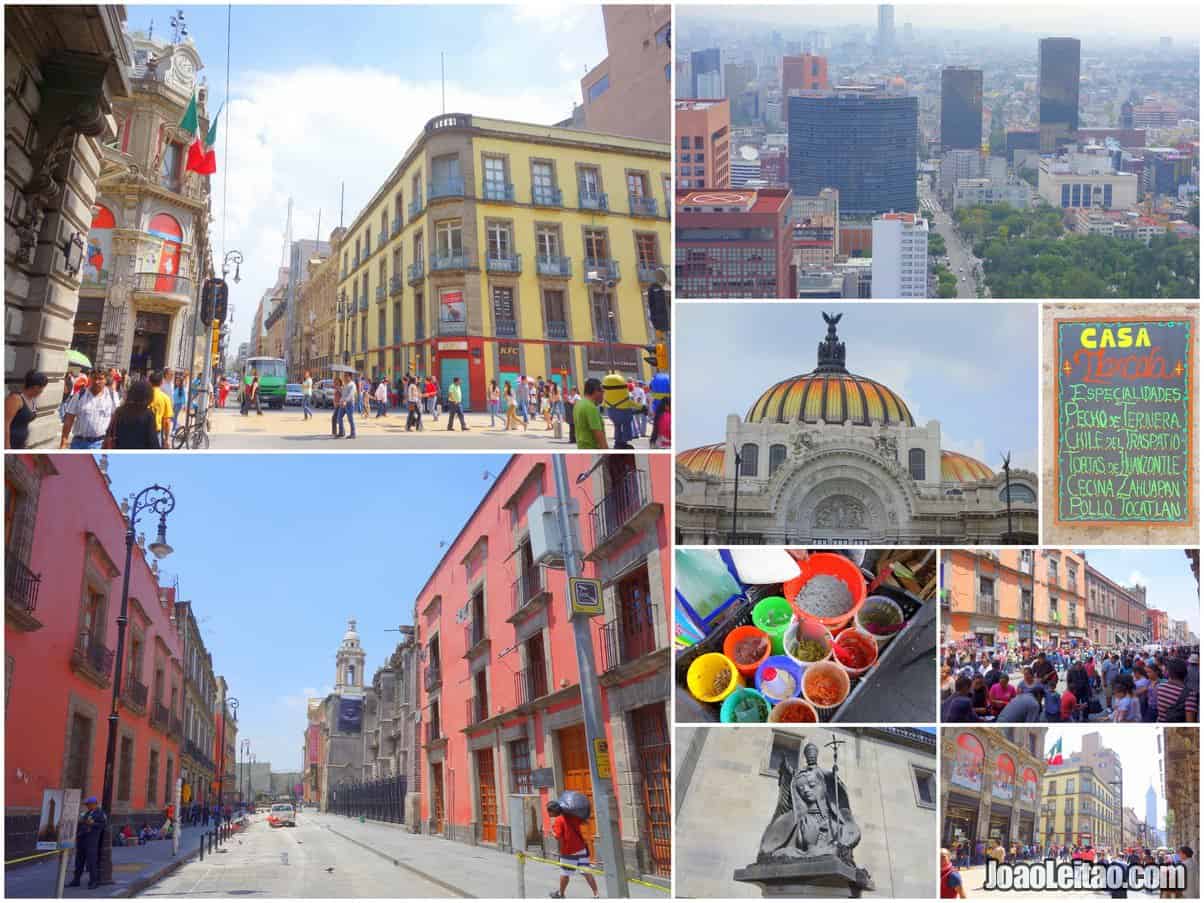
- Wake up early and be the first to enter monuments, museums or other places of interest;
- Go up the Torre Latino – the best view of the city;
- Take a free walking tour;
- Be careful about your belongings;
- To find out the best time to visit Mexico you need to know more about the seasons and the local climate. The best time to visit Mexico City is from November to April;
- Eat street food, very tasty and very cheap.
Where to go when you visit Mexico City
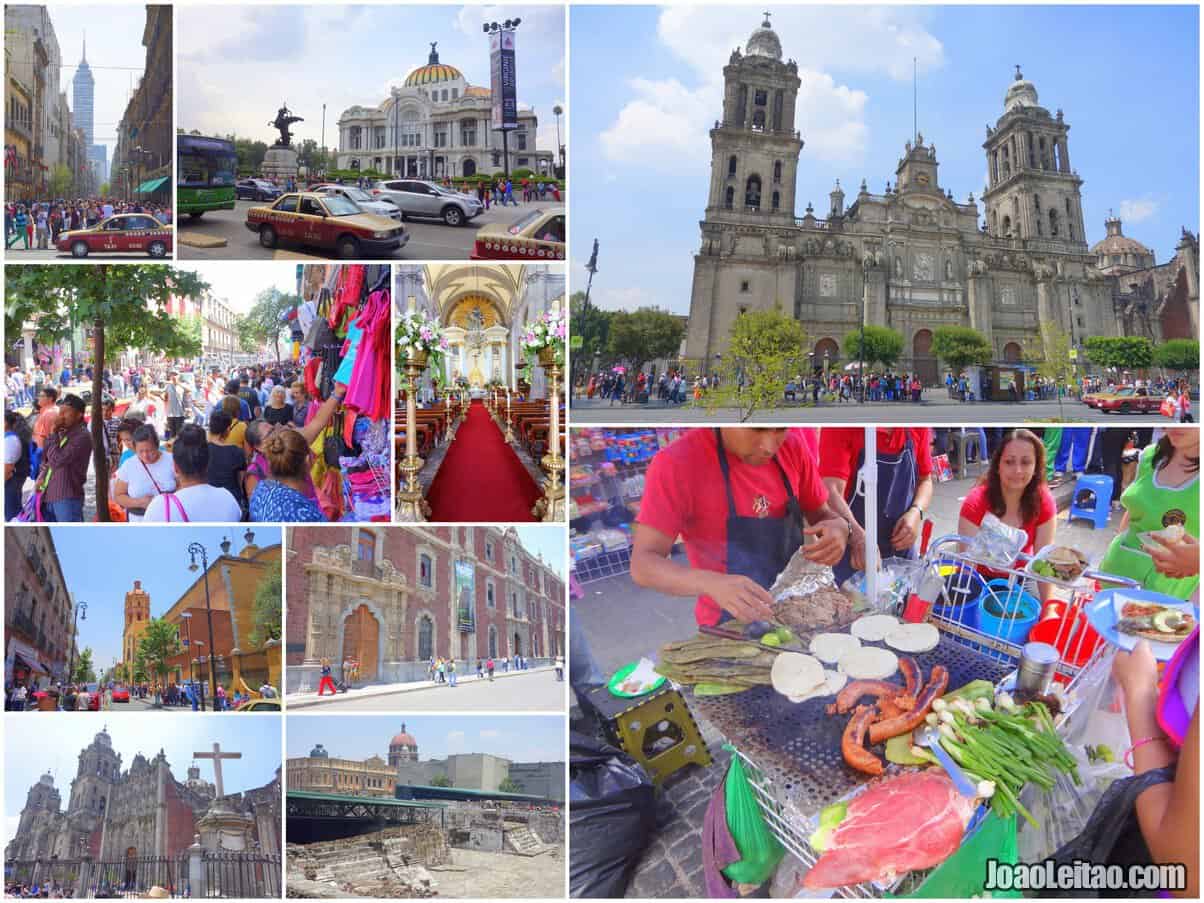
1. Constitution Square
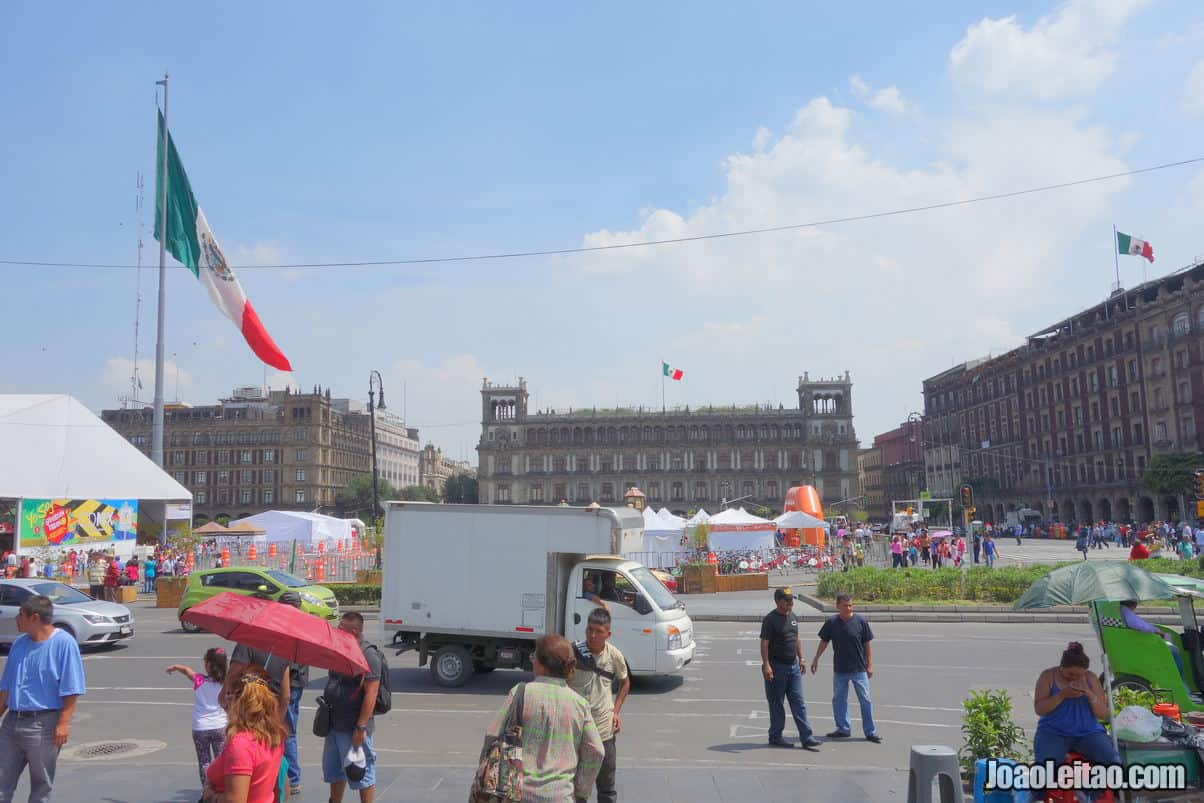
Constitution Square is best known as Zócalo, and it’s Mexico City’s historic center. Zócalo means base and the square has been called that since the 19th century when there were plans to build a monument to independence at the square, but only its pedestal was placed. This is the same place where the Aztecs founded their city and the exact location where, according to legend, the first stone was laid, a moment that’s marked by a statue of an eagle and a serpent on the south side of the square. The Spanish reached in 1525 and established the capital city of the colony here. The Square is 240 meters by 220 meters, one of the largest in the world, and it’s lined by some of the city’s most important landmarks. It’s a vibrant place, full of life, with a lot of street artists. At 8:00 am and 6:00 pm you can witness the ceremonial hoisting of the flag that happens every day.
2. National Palace
The Palace is a government building at Constitution Square, in the heart of the city. Mexico has been ruled from this place since the age of the Aztecs. In fact, a lot of the materials used to build the Palace came from the palace of Emperor Moctezuma II. The Spanish destroyed the Aztec Palace in 1521 and Cortés ordered a fortress to be made in the same place. In 1562, the Crown of Spain bought the building and transformed it into the Palace of the Vice-Roy of New Spain, and it was used as such until the independence of Mexico. The Palace has witnessed many determining moments of National history. From the balcony near the main gate, the new President of Mexico declared the independence of the country in 1810 shouting ” ¡Viva el México!”. There is also a bell that was toll by priest Miguel Hidalgo in the city of Dolores Hidalgo in 1810 and that started the War for Independence.
3. Historic Center of Mexico City
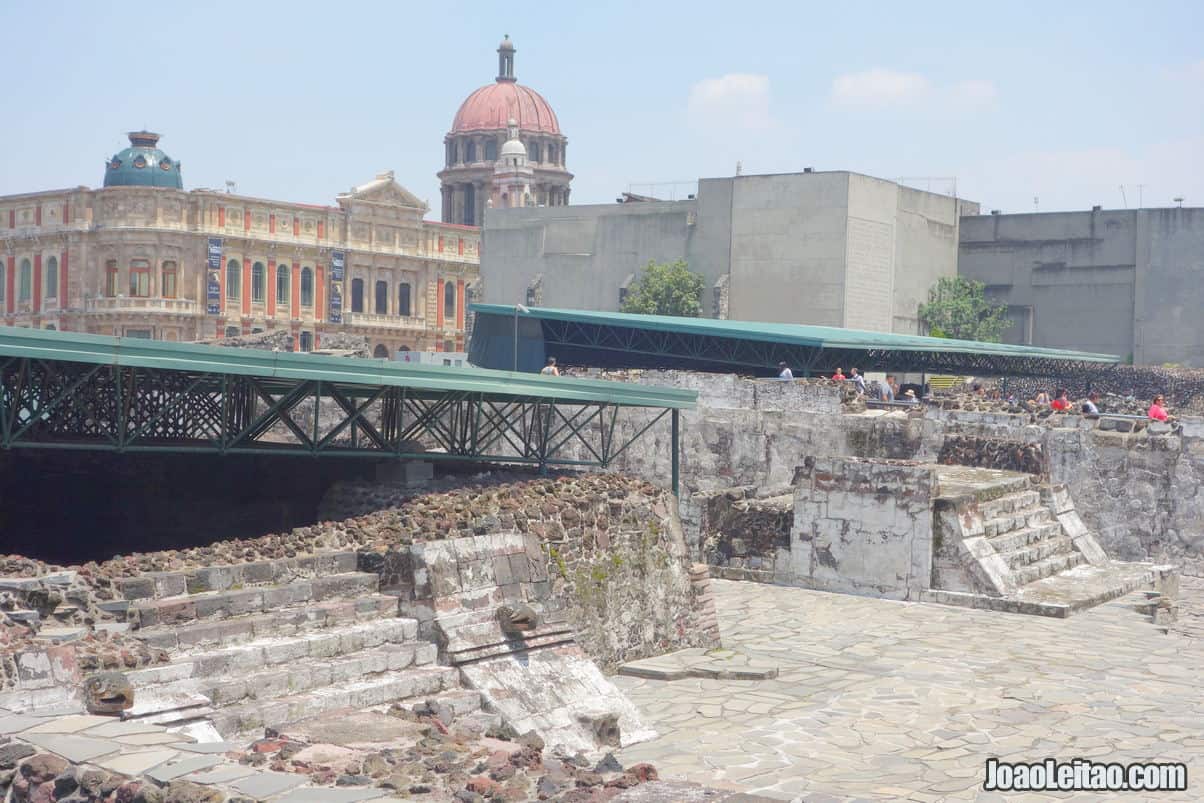
4. House of Frida Kahlo
Frida Kahlo was a famous Surrealist painter born in Mexico City in 1907, where she lived for most of her life. The house is located at a central area of the city, Covoacán, and was initially built in French style in 1904. When Frida’s father passed away, she and her husband Diego Rivera made some changes to the house, painting it in bright blue and building an interior courtyard that let light flow into the rooms. It was turned into a museum in 1957, four years after the artist died, and it’s as it was in the 1950s. The Blue House, where she lived all her life, showcases Frida Kahlo’s life and work through a collection of personal items and photos, but also through some paintings by her, such as Mi Familia (1949) or Frida y la Césarea (unfinished, 1931).
5. Mexico City Metropolitan Cathedral
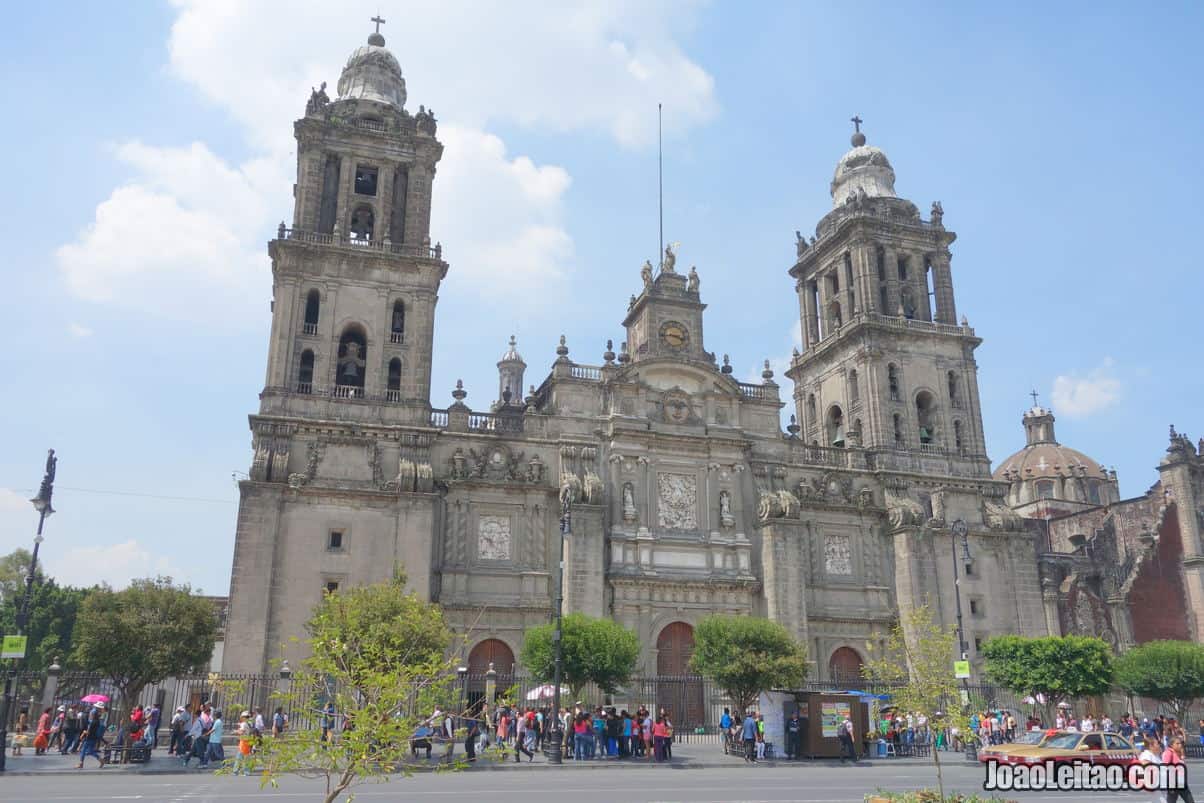
The Metropolitan Cathedral of the Assumption of Mary is on the north side of the Zócalo, near the Palace, a symbol of the love-hate relationship between the state of Mexico and the clergy. It started construction in 1562, designed by Claudio de Arciniega and inspired by the Gothic style that was common at the Spanish churches of that time. However, the church took 300 years to build and the final work is a mix of Renaissance, Baroque, and Neoclassical styles. It was finished in 1813 and it’s still the largest church in the American continent. A fire destroyed a big part of its interior in 1967. Ironically, the reconstruction works uncovered valuable art pieces that were hidden in the building. You can visit the church and even go up to the roof to take a closer look at the bells.
6. Chapultepec Castle
Built upon the hill of the same name, in a central area of the city, and once a sacred place for the Aztecs. Construction began in 1775, under orders of the Vice-Roy. After it was finished, the Crown of Spain decided to sell it and the city bought it in 1806. It was abandoned during the Independence War but became known again in 1847 when the Niños Héroes died defending the castle during the war with the USA. From 1864 onwards, it was the official residence of Emperor Maximilian I and after that, it was an astronomy observatory, a military academy, and an inn for important foreign figures. In 1939 it was decided it would house the National History Museum, where it still is today. You can visit the museum from Tuesday to Saturday.
7. León Trotsky House Museum
You enter the former house of León Trotsky through the back. Not much has changed since the disappearance of that communist ideologist, murdered by Ramón Mercader, a Catalan under Stalin’s orders. You can still see the marks of the bullets from a previous failed attempt in the Russian’s bedroom. Trotsky’s tomb is in the interior courtyard, decorated with the communist hammer and sickle. Trotsky was expelled from the Soviet Union in 1929 and later sentenced to death. He lived in different countries before settling in Mexico in 1937. He and his wife lived at Frida Kahlo’s house for a while, but his affair with the Mexican painter forced the couple to move to this house. The museum was created in 1990. You can visit from Tuesday to Saturday, and includes free guided tours.
8. Pyramid of the Sun
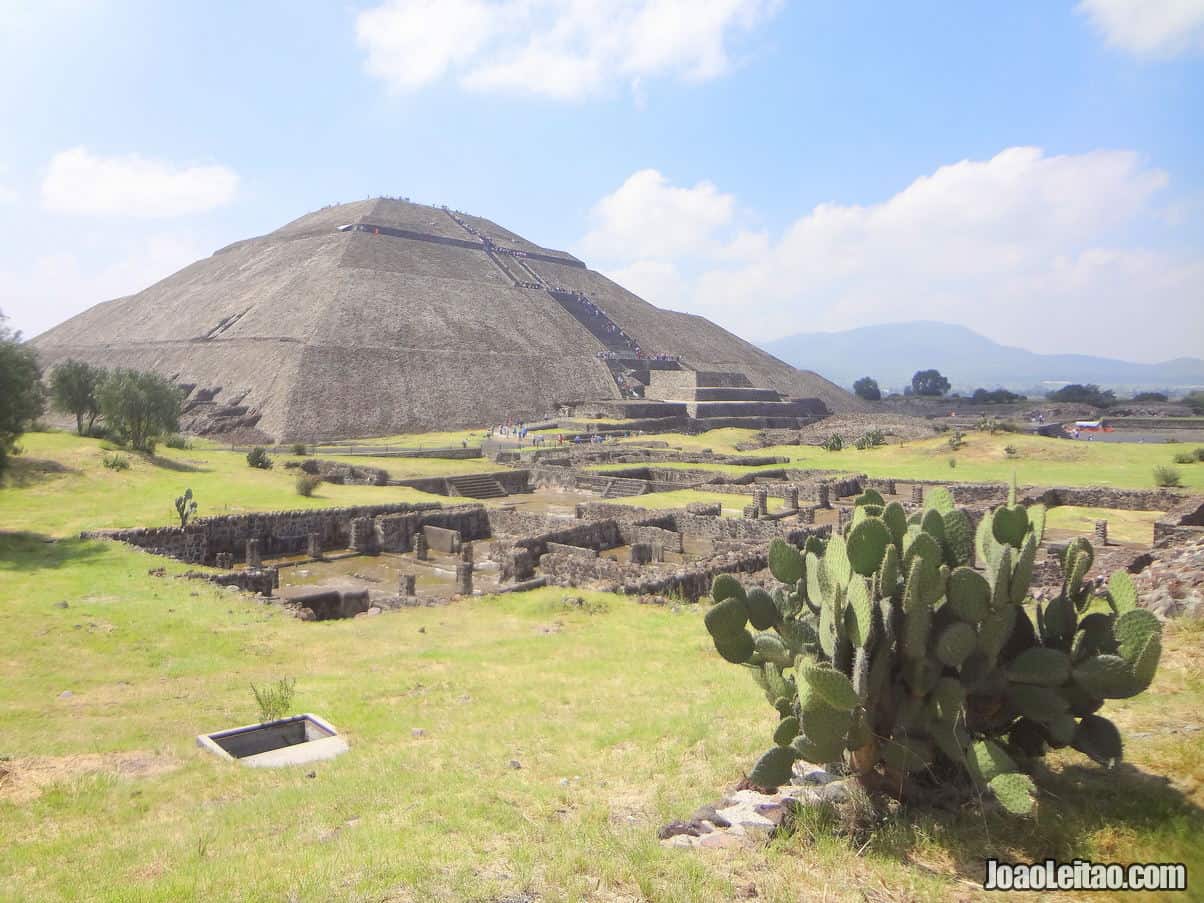
The Pyramid of the Sun is the largest structure at the Teotihuacan archaeological site, part of UNESCO World Heritage Sites list, and 40 km northwest of Mexico City. At its prime, around the 1st century, Teotihuacan was the most important city of Pre-Colombian America, with over 125,000 people. Aztecs named the pyramid when they visited the place after centuries of abandonment. The pyramid, built in two stages during the 3rd century, is 220 square meters in area and 65 meters high. At the time, the pyramid was plastered and decorated with frescoes, but they didn’t survive the test of time and all artistic representations were lost. There used to be a temple at the top, but nothing remains.
9. Monument to the Revolution
The construction of the Monument began in 1932 and ended in 1938. It was designed by architect Carlos Obregón Santacilia and influenced by Art Deco and Mexican Socialist Realism styles. It’s located at the Republic Square at the same place where dictator Porfirio Díaz was planning to build a grand Federal Legislative Palace, but the Mexican Revolution changed the course of events. The tombs of famous heroes of the Revolution, such as Pancho Villa and Lázaro Cárdenas, are part of the monument. In addition to visiting this monument, you can also reach the panoramic dome at the top, 65 meters high, via an express elevator. The Museum of the Revolution is at the base of the monument and there’s an art gallery in the basement called Paseo Cimentación.
10. Palace of Fine Arts
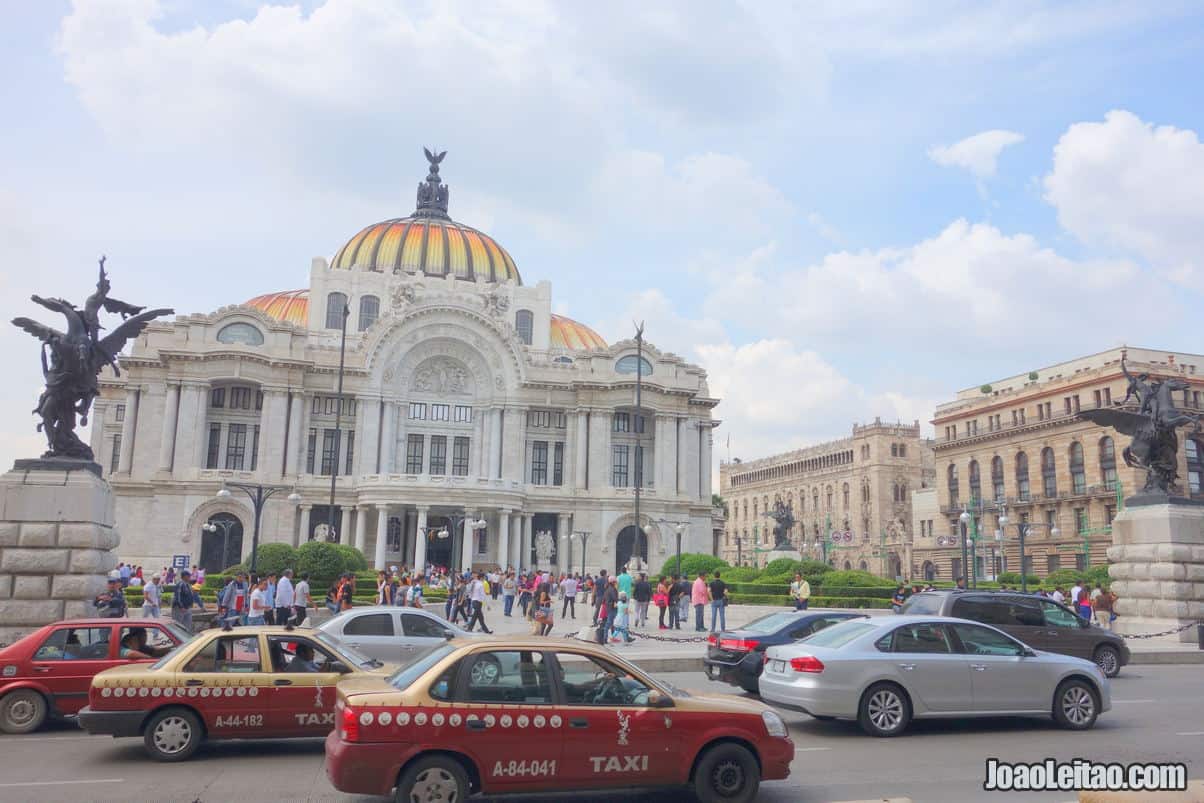
11. House of Tiles
The Palace of the Counts of Orizaba, also known as the House of Tiles, was built in 1793 in the historical center of Mexico City. It was private property for a large part of the following century, with different owners. In 1881 it was the headquarters of the chic Jockey Club and in 1919 it was bought by brothers Walter and Frank Sanborn, who turned the building in what would be a primitive version of a shopping mall with a liquor store, a newspaper kiosk, a pharmacy, and a restaurant. The concept was popular and the Sanborn chain was born, a chain that still manages the restaurant in the building. Inside, highlights include the Moorish fountain and a mural painted by José Clemente Orozco in 1925. It’s been a National Monument of Mexico since 1931.
12. National Art Museum of Mexico
Founded in 1982, the National Art Museum is relatively new. It’s located inside a Neoclassical building, which is considered as one of Mexico’s most important buildings from the early 20th century where once was the Palacio de Comunicaciones y Obras Públicas. What you see now is the result of an extensive renovation that ended in 2000. The exhibition area stretches for over 5,500 square meters, where the best works of a collection with over 3,000 pieces are on display. The permanent exhibition is curated in a way that showcases the timeline of the Arts in Mexico, from the colonial days to the mid-20th century, divided into three historical periods: Colonial Mexico, the first 100 years of independence, and the time between the Revolution and the 1950s. As expected, there are always temporary exhibitions. You can visit the museum from Tuesday to Sunday.
13. Torre Latino
Inaugurated in 1956, the fantastic Torre Latinoamericana, or simply known as Torre Latino, is located in the historic center of Mexico City.
You can buy a ticket and go up the elevator to the Observation Deck, and delight yourself with an amazing view of Mexico City.
Torre Latino goes up to 44 floors and measures 181.33 meters. Interestingly, it was once the tallest building in Mexico, and even was the tallest building in the world built outside the United States of America.
14. Street markets
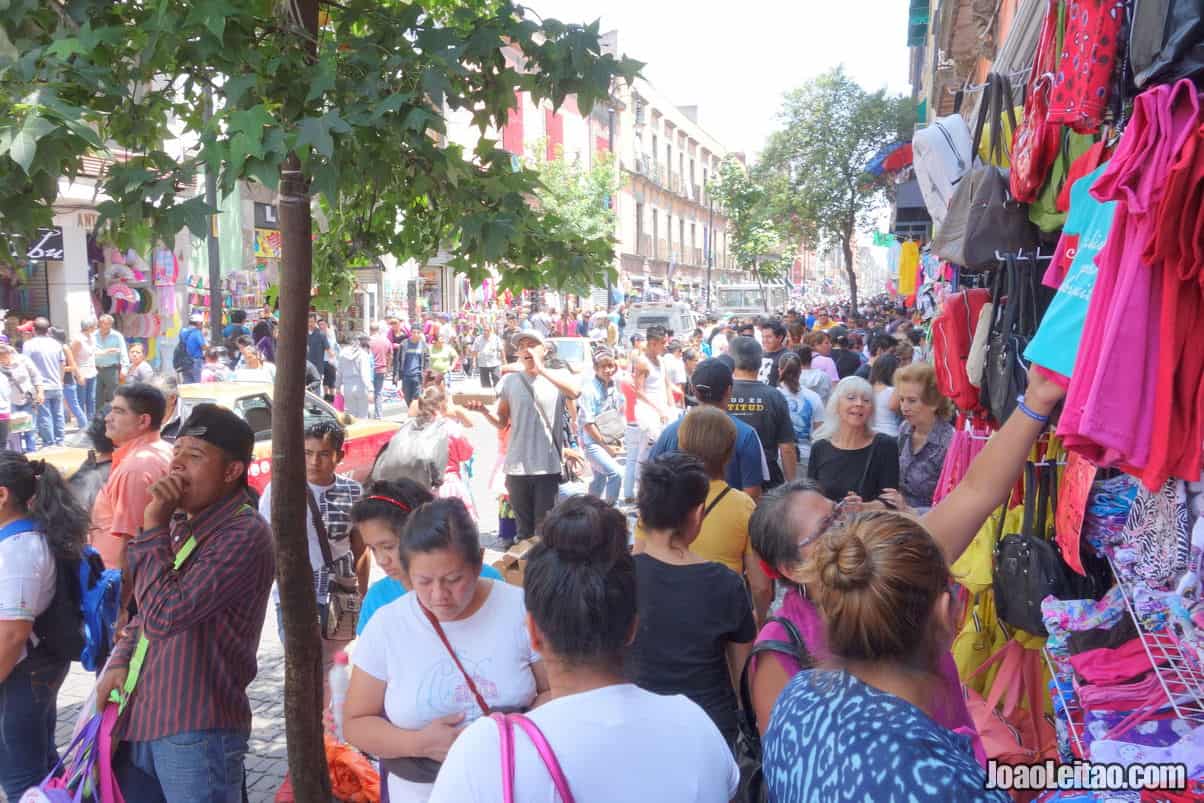
Mexico city has entire neighborhoods filled up with street markets. If you’re into markets, you can refuge yourself among the thousands of people shopping for everything ranging from clothing to electronics.


